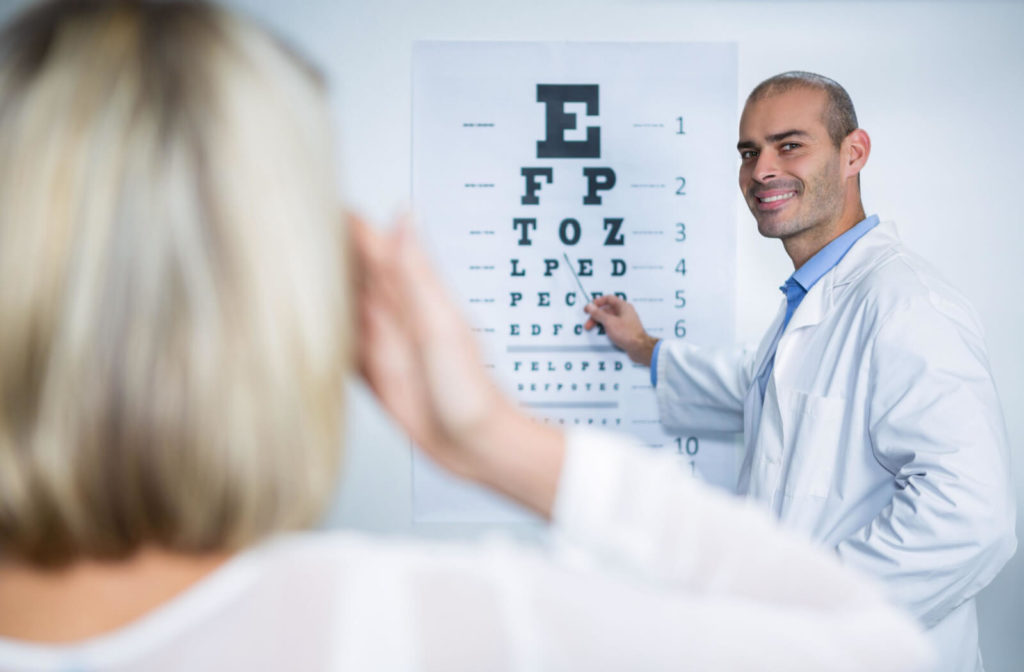The Value of Regular Check-Ups with an Eye Doctor Optometrist
The Value of Regular Check-Ups with an Eye Doctor Optometrist
Blog Article
Checking Out the Most Current Technological Improvements in Optometry and What They Mean for Optometrists
From the precision of Optical Coherence Tomography to the nuanced insights provided by AI-driven diagnostic devices, these advancements are establishing new requirements in person assessment and treatment. As these innovations permeate the technique, eye doctors are faced with the difficulty of accepting these tools to enhance client results.
Innovations in Diagnostic Equipment
Progressing the field of optometry, innovations in analysis tools have actually revolutionized the means eye treatment experts evaluate and detect visual impairments and ocular conditions. The previous decade has actually experienced considerable technical improvements, allowing even more detailed and accurate evaluations. Optical Comprehensibility Tomography (OCT), as an example, provides high-resolution cross-sectional photos of the retina, enabling the very early discovery of illness such as glaucoma and age-related macular degeneration. This non-invasive imaging technique has actually become essential in modern optometric method.
One more trick innovation is the introduction of innovative corneal topography systems, which map the surface curvature of the cornea with precision. These devices are particularly helpful for suitable contact lenses and detecting corneal problems. Digital retinal imaging has actually changed standard ophthalmoscopy, providing in-depth, scenic sights of the retina that promote comprehensive visual assessments.
The growth of wavefront aberrometry has likewise been important, making it possible for the evaluation of refractive errors with unequaled accuracy (Eye Doctor). This technology assists in personalizing corrective lenses and boosting medical results for refractive surgeries. Jointly, these diagnostic developments empower eye doctors to supply exceptional individual care, making sure very early intervention and tailored therapy techniques, ultimately enhancing visual wellness results
AI in Individual Management
Building on the structure of sophisticated analysis tools, the consolidation of synthetic knowledge (AI) in person administration stands for a transformative leap for optometry. AI systems are significantly used to boost performance, accuracy, and customization in person treatment.
Furthermore, AI-driven platforms help with streamlined patient interactions and management procedures. Automated organizing, digital appointments, and personalized follow-up strategies not only improve person fulfillment however also maximize time monitoring for professionals. These systems can triage people based upon the urgency of their conditions, making sure that those in crucial need obtain prompt interest.
In addition, AI boosts decision-making by giving optometrists with evidence-based recommendations and therapy paths. By incorporating data from electronic health and wellness documents, AI tools provide understandings that notify medical choices, decreasing the risk of errors and boosting client outcomes. As AI remains to evolve, its function in individual monitoring will likely broaden, improving the landscape of optometric care.
Developments in Retinal Imaging
In the world of optometry, retinal imaging has experienced impressive technical improvements that are enhancing analysis capacities and client care. Developments such as Optical Comprehensibility Tomography (OCT) and fundus digital photography have reinvented how optometrists imagine and examine the retina.
Improved imaging techniques like OCT angiography are more refining analysis accuracy. This non-invasive technique maps blood flow in the retina, providing critical insights right into vascular wellness without the demand for dye shots. Additionally, flexible optics modern technology is being integrated right into retinal imaging systems to remedy eye aberrations, providing extraordinary image clearness. Such advancements facilitate the identification of min retinal changes that can symbolize illness development.
Additionally, developments in expert system are boosting retinal imaging by enabling automated evaluation of big datasets. These systems aid eye doctors in determining patterns a sign of pathology, thereby boosting analysis precision and performance. Jointly, these innovations are changing retinal imaging into a keystone of modern eye care, enhancing results and broadening restorative opportunities.
Teleoptometry's Expanding Function
Teleoptometry is increasingly coming to be a crucial component of eye treatment, driven by developments in digital interaction and diagnostic tools. This is particularly valuable in underserved and country areas where accessibility to specialized eye treatment is usually minimal.
The integration of expert system (AI) additional boosts teleoptometry, allowing the analysis of visual data and aiding in the discovery of ocular problems such as glaucoma and diabetic retinopathy. AI-powered formulas can swiftly analyze complex imaging data, providing optometrists with valuable insights that boost medical decision-making.
Moreover, teleoptometry sustains connection of care with smooth integration with digital health and wellness documents (EHRs), permitting eye doctors to preserve detailed patient histories. This makes sure that people receive consistent and personalized treatment even when talking to various experts.
In spite of these benefits, difficulties stay, consisting of ensuring data protection and handling person assumptions. Nonetheless, teleoptometry click for info represents a considerable stride in the direction of even more easily accessible, reliable, and patient-centered eye treatment. As technology advances, its duty is poised to increase better.

Future Fads in Eye Care
A myriad of innovative fads is established to reshape the future of eye treatment, driven by technological innovations and the developing needs of patients. One significant trend is the combination of man-made intelligence (AI) in diagnostics, which promises to improve the precision and performance of eye exams. AI algorithms can analyze vast amounts of information from retinal images, possibly finding problems like diabetic person retinopathy and glaucoma earlier than standard approaches.
Moreover, customized medicine is obtaining traction in optometry, with hereditary testing notifying customized therapy strategies. This technique aims to enhance client end results by tailoring treatments to individual hereditary profiles. Wearable modern technology, such as smart get in touch with lenses, is also coming up, using real-time monitoring of intraocular stress or sugar levels, thus giving continual insights right into ocular and systemic wellness.
The adoption of enhanced reality (AR) and virtual reality (VIRTUAL REALITY) in training and Get More Info patient education is another arising pattern. These technologies supply immersive experiences that can improve understanding and skills both for eye doctors and people. As these patterns progress, eye doctors should remain abreast of technological innovations to provide advanced treatment, making certain better patient results and contentment in the dynamic landscape of eye care.
Final Thought

Collectively, these analysis innovations equip eye doctors to deliver exceptional individual care, ensuring early intervention and tailored therapy methods, inevitably boosting aesthetic health results.

As these innovations proceed to progress, optometrists need to adjust and include them into practice, ultimately maximizing process effectiveness and elevating the standard of eye treatment supplied have a peek here to patients.
Report this page